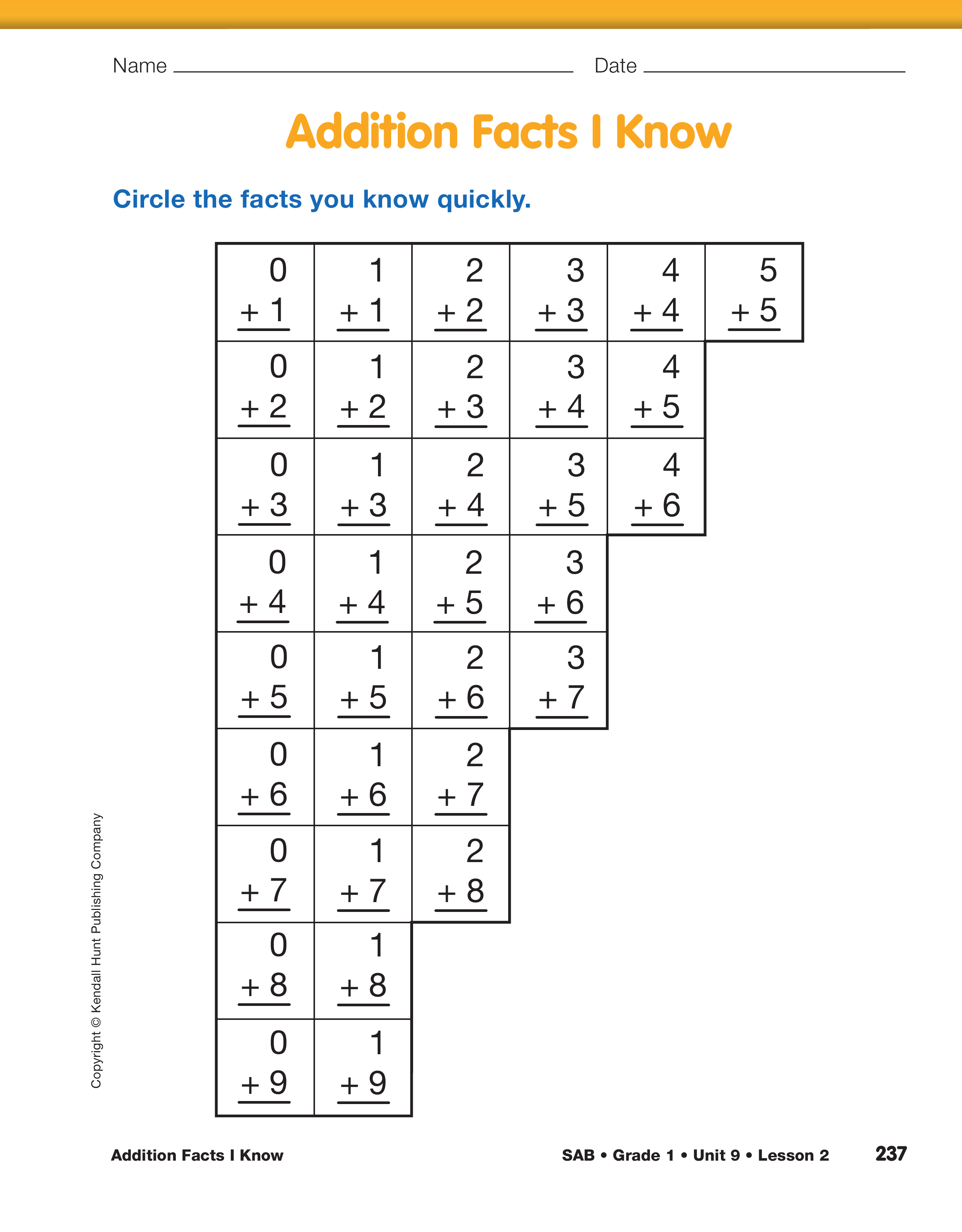Addition Facts I Know
Est. Class Sessions: 1–2Developing the Lesson
Reviewing Strategies. Direct students to remove the Addition Facts I Know page from their Student Activity Book. Ask students to work with their partner to study the chart and find any patterns they notice.
After students have had several minutes to study the chart, ask:
Have each student choose different problems from the chart and take turns explaining the strategy he or she would use to solve each problem with their partner. As students are sharing their strategies, listen to their explanations and ask questions to clarify, as needed. See the Sample Dialog.
After students have had time to talk about their strategies with their partners, use your observations to encourage students to share their thinking with the whole class.
Record the Addition Facts I Know for Groups A and B. Provide each student with a set of the Addition Flash Cards for Groups A and B. Students can use the Sorting Flash Cards Board from Unit 6 Lesson 2, or a copy of the Sorting Flash Cards Board Master can be provided to each student, as needed. Tell students that they will work with their partner to practice their addition facts using their flash cards. Use the display of the Addition Facts I Know page from the Student Activity Book, the Sorting Flash Cards Board Master, and the demonstration set of flash cards to review how students will sort their cards into three piles: Facts I Know Quickly, Facts I Can Figure Out, and Facts I Need to Learn.
One student from each pair will turn over his or her flash cards one at a time, solving the problem on the card. His or her partner will check to make sure the answer is accurate. The student will place the card on the sorting board after deciding if the problem is a fact they know quickly, a fact they can figure out, or a fact they still need to learn. If a student is having difficulty with a fact, encourage them to use the strategy suggested on each card. After sorting all of the flash cards, the student circles all of the facts on the cards he or she knows quickly on the Addition Facts I Know chart. The second partner then follows the same procedures to practice his or her flash cards.
After both students have sorted their flash cards, they should continue to practice the cards in the Facts I Can Figure Out and Facts I Need to Learn piles.















